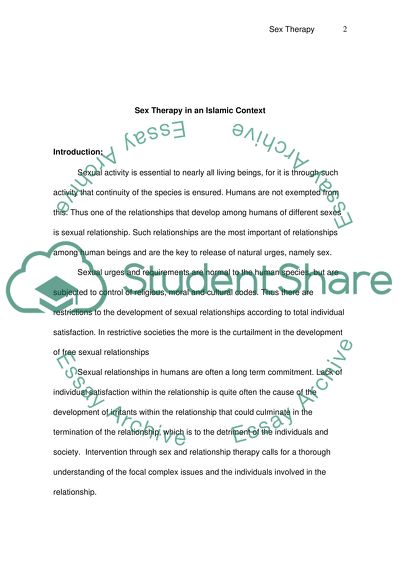Cite this document
(“Sex Therapy in an Islamic Context Essay Example | Topics and Well Written Essays - 4000 words”, n.d.)
Retrieved from https://studentshare.org/sociology/1502029-sex-therapy-in-an-islamic-context
Retrieved from https://studentshare.org/sociology/1502029-sex-therapy-in-an-islamic-context
(Sex Therapy in an Islamic Context Essay Example | Topics and Well Written Essays - 4000 Words)
https://studentshare.org/sociology/1502029-sex-therapy-in-an-islamic-context.
https://studentshare.org/sociology/1502029-sex-therapy-in-an-islamic-context.
“Sex Therapy in an Islamic Context Essay Example | Topics and Well Written Essays - 4000 Words”, n.d. https://studentshare.org/sociology/1502029-sex-therapy-in-an-islamic-context.


